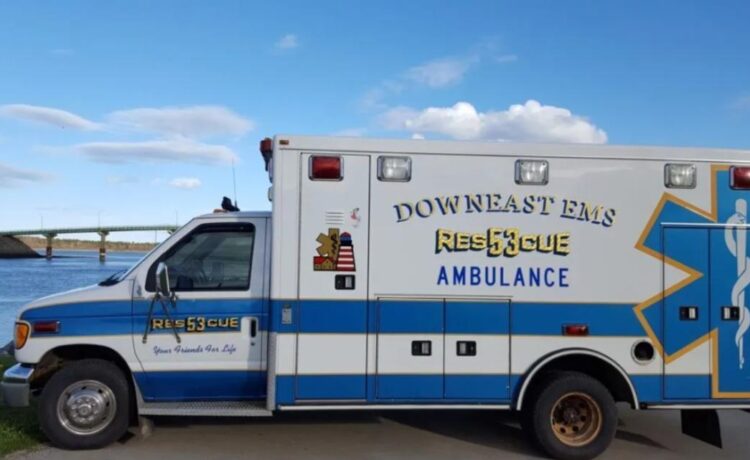Some think all the money should go directly to EMS agencies, while others emphasize the need to support training centers.
ALFRED, Maine — A committee tasked with distributing $31 million in funding to faltering emergency medical service agencies around the state met in Alfred earlier this month to determine how the remaining $19.3 million would be spent.
The money was allocated by the Legislature last year to stabilize the emergency medical system, which is considered to be in crisis. So far, more than $10 million has been distributed to 184 ambulatory agencies statewide.
But members of Maine EMS, a state agency that includes paramedics, doctors and advanced EMTs, disagree about how to spend the remainder of the money — some think it should go directly to EMS agencies, while others emphasize the need to support training initiatives.
The committee charged with establishing the grant guidelines recently proposed a change that would direct nearly half of the remaining funds to training centers.
The original goal, said one lawmaker who co-authored the legislation, was to shore up the finances of the state’s 260 eligible EMS providers, many of which are on the brink of collapse.
“We were able to get an unprecedented amount of $31 million added to the governor’s budget,” said Rep. Sue Salisbury (D-Westbrook). “Then just recently, we see rulemaking come out… which changes the trajectory of this money without a public hearing being proposed.”
The Rules Committee of the Maine EMS Board, which is overseeing how the funds are disbursed, proposed that $9.3 million be distributed directly to EMS agencies, $9 million allocated for training centers and $1 million for regional offices that coordinate between local and state EMS agencies. EMS agencies can apply for up to $200,000 in funds, training centers can apply for up to $900,000 and regional offices can apply for up to $250,000.
Lawmakers charged the EMS Board with establishing the guidelines and application requirements. The aim of the program, according to statute, is to support agencies “that are facing immediate risk of failure,” as well as to “increase the sustainability, efficiency and resiliency of emergency medical services.”
The state has seen several EMS services consolidate or close in recent years, as in Corinth, where Northern Light Health has decided to consolidate its ambulance service. The crisis has been fueled by low Medicare reimbursement rates, low call volumes for service, low pay and workforce shortages.
A blue ribbon commission to study emergency medical services in the state initially recommended the Legislature approve $71 million over the course of five years to stabilize the system.
‘Not all of us have grant writers’
At the meeting in Alfred, all agreed that the money needs to be distributed to keep EMS agencies afloat statewide. But there was debate regarding the process and priorities.
Some members of Maine EMS criticized the board for what they said was an unnecessarily complex application process during the initial round of funding and disagreed with the decision to allocate money for training centers in the second round.
The first round of emergency funding was distributed to 184 agencies at risk of financial failure, including EMS providers in Saco, Portland, Bangor and Caribou. But 76 eligible agencies did not apply, many of which were volunteer fire and rescue services in rural communities. Some faulted the application process for this gap.
“I spent a tremendous amount of time with services helping them walk through the process,” said Rick Petrie, special projects advisor for Atlantic Partners EMS, which is contracted by the state to serve as the regional office for several southern Maine counties. “(EMS agencies) were frustrated by the guidelines for what they could spend it on, and they felt really boxed into a corner.”
The fire chief in East Millinocket, Kevin McAdams, said the process to apply for the first round of funding went well because they had support from the town office. He said smaller departments might have been overwhelmed by the process.
“Not all of us have grant writers and other departments that can help (with) all the technical stuff,” he said. “That’s why a lot of them didn’t apply.”
The application, which is accompanied by a nine-page guide that lays out 49 multi-part steps, required agencies to detail their finances, emergency response operations, stabilization plans and provide a project budget, among other things.
To assist with the second round of grant allocations, the board has designated two technicians to assist agencies as they navigate the application process.
Workforce pipeline
The other piece of the debate hinged on the decision to fund training centers, which offer licensure classes and continuing education opportunities. There are ten training centers approved by Maine EMS in the state. Some have had difficulty finding educators, and some have seen low student demand for courses and high demand in others.
The board director of Maine EMS, William O’Neal, said they decided to fund training centers to solve some aspects of the EMS workforce shortage.
O’Neal said the committee’s task was to distribute the money in a fair and equitable way, adding that he consulted with a variety of stakeholders and that he did not think the approach they landed on deviated from the blue ribbon commission’s recommendations, which mentioned funding for these programs as an outstanding need.
“Our workforce pipeline is too narrow,” O’Neal said.
Staffing challenges are exacerbated in rural communities, O’Neal said, explaining that supporting training centers could provide infrastructure for technicians to work in areas of Maine where they’re needed most.
“It’s a robust approach and it still continues to account for that great need in the rural areas of Maine in addition to having the discussion about widening that workforce pipeline,” O’Neal said. “But in the end, if we don’t have a sustainable system, then the individual facets will also fail. And so that’s why we took this approach.”
But a number of Maine EMS members took issue with this plan, as it means less money is going directly to EMS agencies.
“To take away that money now for services that are struggling… would be an unfortunate slap in the face to EMS services that are doing everything they can to keep their head above water and try to continue to respond,” Petrie said.
Maine Fire Chiefs’ Association executive director William St. Michel made a similar point.
“If revenues are not coming in to keep the services running nothing else will matter,” he said in an email to the board.
McAdams, the fire chief in East Millinocket, said his agency received $57,000 and used it to purchase equipment for its ambulances. He said he thinks the next round should go to agencies, not training centers.
“It’s supposed to help us, to stabilize us – not secure our jobs for other places,” he said.
Yet to O’Neal, establishing advanced training centers with research capabilities will help lay the groundwork for strong EMS agencies moving forward.
“It’s about building the skeleton that’s going to allow (Maine EMS services) to function,” O’Neal said.
This story was originally published by The Maine Monitor, a nonprofit and nonpartisan news organization. To get regular coverage from the Monitor, sign up for a free Monitor newsletter here.














